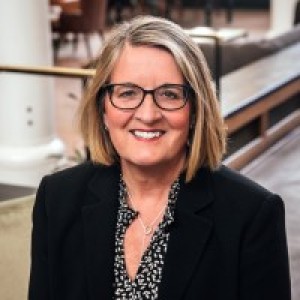- Video Library
- Yvonne Bokelman Presents Alyve Medical at LSI USA '23
Yvonne Bokelman Presents Alyve Medical at LSI USA '23

Yvonne Bokelman
Prior to joining Alyve Medical, Yvonne was most recently a President and General Manager at Zimmer Biomet. She spent more than ten years at Zimmer Biomet in a number of leadership and executive roles of increasing responsibility, overseeing a variety of functions and, in more recent years, businesses that totaled nearly $300M in annual revenues. Prior to her time at Zimmer Biomet she served in leadership roles at Medtronic Spine & Biologics, QuadraMed, and healthcare consulting companies, preceded by several years in hospital administration. Yvonne obtained her MBA, as well as is a Fellow in the American College of Healthcare Executives.
Yvonne brings a strategic medical device background, strong P&L experience, and a leadership development approach that attracts expert talent. Her strong drive, sense of urgency, combined with outstanding communication and execution skills guide her teams to deliver strong results. “I could not be more excited about the potential of Alyve Medical. With first class, innovative products, and an exceptional leadership team, our future is set to skyrocket!”
Yvonne Bokelman
Prior to joining Alyve Medical, Yvonne was most recently a President and General Manager at Zimmer Biomet. She spent more than ten years at Zimmer Biomet in a number of leadership and executive roles of increasing responsibility, overseeing a variety of functions and, in more recent years, businesses that totaled nearly $300M in annual revenues. Prior to her time at Zimmer Biomet she served in leadership roles at Medtronic Spine & Biologics, QuadraMed, and healthcare consulting companies, preceded by several years in hospital administration. Yvonne obtained her MBA, as well as is a Fellow in the American College of Healthcare Executives.
Yvonne brings a strategic medical device background, strong P&L experience, and a leadership development approach that attracts expert talent. Her strong drive, sense of urgency, combined with outstanding communication and execution skills guide her teams to deliver strong results. “I could not be more excited about the potential of Alyve Medical. With first class, innovative products, and an exceptional leadership team, our future is set to skyrocket!”

17011 Beach Blvd, Suite 500 Huntington Beach, CA 92647
714-847-3540© 2025 Life Science Intelligence, Inc., All Rights Reserved. | Privacy Policy







